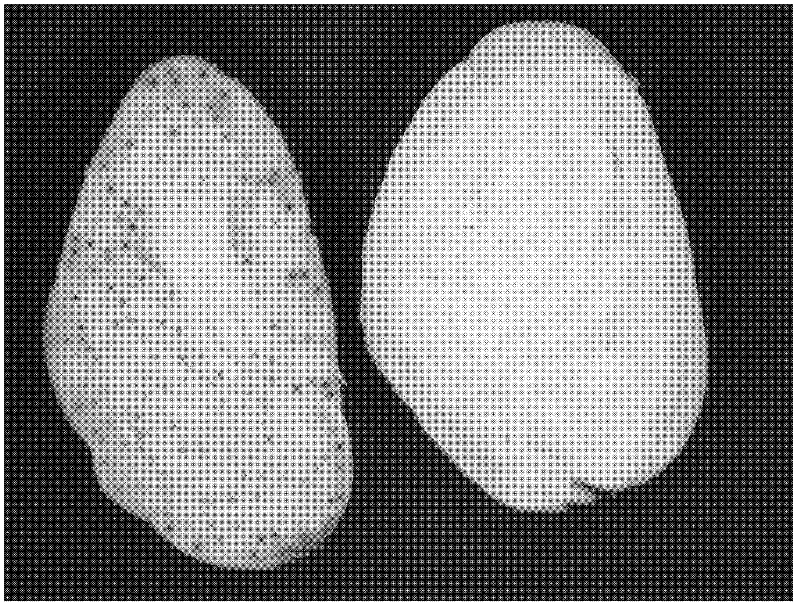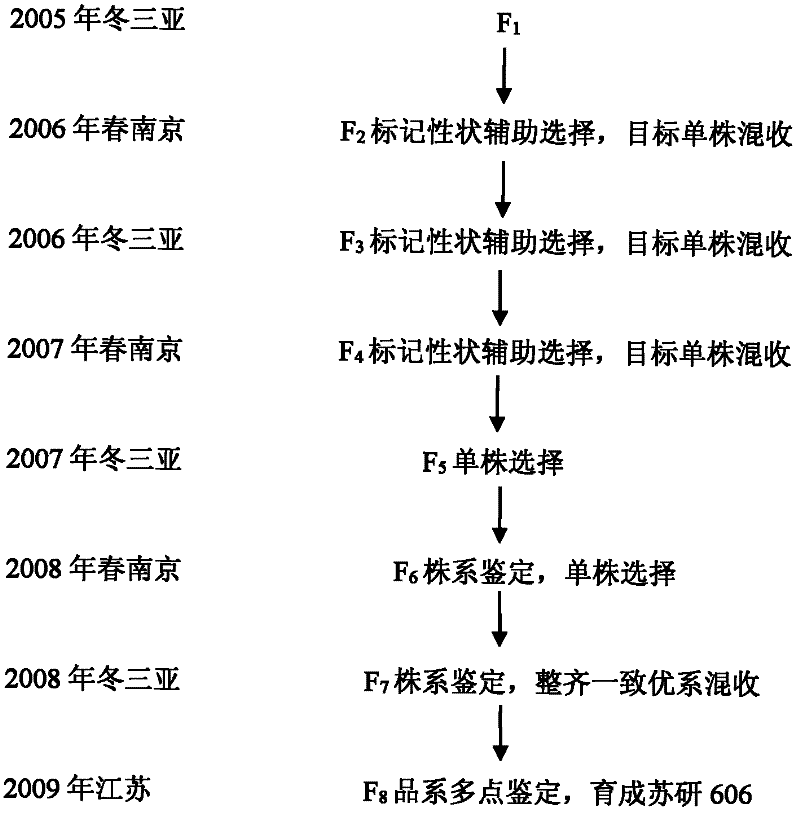Transgenic helicoverpa armigera-resistant and phenol-free cotton breeding method
A cotton bollworm and transgenic technology, applied in the field of cotton genetic improvement and biotechnology, can solve the problems of pollution, lack of cotton field pests and mouse resistance, etc., and achieve the goal of improving selection efficiency, improving economic benefits of cotton planting, and shortening the breeding period Effect
- Summary
- Abstract
- Description
- Claims
- Application Information
AI Technical Summary
Problems solved by technology
Method used
Image
Examples
Embodiment Construction
[0029] choose parent
[0030] Xiangmian 18 [Zhang Xuelin, Jin Lin, Zeng Zhaoyun et al. Preliminary report on the breeding of Xiangmian 18, China Cotton, 2000, 27(10): 18-19], a high-yield, dominant low-phenol cotton variety, Cotton in Hunan Province The research institute bred it in 1995, and passed the Hunan Provincial Variety Approval and Name in 2000. The full growth period of this variety is 123 days. Under the condition of planting density of 36,000 plants / ha, the plant height is 100-105cm, 24.5-26.2 bolls per plant, 5.7 grams per boll, and 42.48% of the clothing. The average length of the upper half of the fiber is 28.3 mm, the specific strength at break is 29.3 cN / tex, and the micronaire value is 5.1. The content of free gossypol in the seeds is 0.00304%, which is lower than the national edible standard of 0.02%, and belongs to the type of low-phenol cotton.
[0031] Su 76149 [Wu Qiaojuan, Xiao Songhua, Liu Jianguang, etc. Cultivation of new germplasm of high-quality ...
PUM
 Login to View More
Login to View More Abstract
Description
Claims
Application Information
 Login to View More
Login to View More - R&D
- Intellectual Property
- Life Sciences
- Materials
- Tech Scout
- Unparalleled Data Quality
- Higher Quality Content
- 60% Fewer Hallucinations
Browse by: Latest US Patents, China's latest patents, Technical Efficacy Thesaurus, Application Domain, Technology Topic, Popular Technical Reports.
© 2025 PatSnap. All rights reserved.Legal|Privacy policy|Modern Slavery Act Transparency Statement|Sitemap|About US| Contact US: help@patsnap.com



